Lighting Design Finally Gets its Artful Due in Electrifying New MFAH Exhibit
Let There Be Light
BY Tarra Gaines // 03.02.21Mega Chandelier by Moooi Works, manufactured by Moooi, 2018, mixed media and bulbs.
Consider the simple lightbulb. No really, consider it — as well as the chandelier, table, desk and floor lamp. Then think a bit on the wall light for good measure. Now ask this question: But can it be art? The Museum of Fine Arts, Houston invites Texans to do just this, contemplate lights as designed objects that radiate through function and form to become something more with the new exhibition Electrifying Design: A Century of Lighting.
“Since the invention of the first lightbulb in the 19th century, people have been fascinated by light, whether you are an engineer, scientist, artist, regular person. It has the ability to harness a quality of awe, of magic,” Cindi Strauss, curator of decorative arts, craft and design at MFAH, says during a preview walkthrough of the show.
Strauss has kept her eye on lighting for most of her career. Teaming up with fellow Texas curator, Sarah Schleuning, from the Dallas Museum of Art, Strauss and Schleuning help the MFAH bring to light the first large-scale exhibition in the United States to explore objects that light as design objects.
From Shadow to Light
“From early in design history, lighting has been developed in lockstep with many of the forms we normally think about, like furniture, ceramics or glass, functional objects but lighting has never received the attention or frankly the respect that it has been due,” asserts Strauss, arguing for the lighting design as an important field in the decorative arts.
“We want to literally bring it out of the shadows and show it as a very significant discipline.”

Now with Electrifying Design, lighting gains that respect as the exhibition assembles 85 rare or limited-production pieces from the 1920s to 21st century and from private collections and international museums including the Museum of Modern Art, Musée des Beaux Arts de Montréal, Cooper Hewitt Museum, Smithsonian Institution, Centre Pompidou, DMA and the MFAH’s growing collection.
The exhibition makes a serious examination of the evolution of lighting design, but with installations that joyfully let the light in.
“Over the course of the 20th and 21st centuries, the field inspired legions of architects and designers to consistently address the subject of lighting design, leading to the creation of original objects that transcended their function,” Strauss and Schleuning describe in the exhibition catalogue.
Radiant Themes
Strauss explains that to present a full survey of a 100 years of lighting they would have needed much of the Law Building, so instead they’ve organized the show around three concepts: Typologies, the Lightbulb and Quality of Light. Each thematic section contains a gallery that gives a historical overview, tracing how forms have changed with the times and technology, along with the longevity of certain styles.
The exhibition balances these right-side galleries alongside “wonder” left-side galleries that showcase designers’ leaps into that “magic” leap, or a “new alchemy of light,” as Strauss describes, when functional light object perhaps becomes art.
The first Electrifying piece, Moooi Works’ Mega Chandelier certainly lights the wondrous stage of the opening Typologies section. The Moooi’s design team seems to deconstruct the many forms chandeliers take and then integrates all those forms within its Mega structure. Later in the Typologies section, we see the evolution of the task or table lamp on the right gallery before being confronted in the wonder gallery by Gaetano Pesce’s giant, benign monster, Floor Lamp.
In the Lightbulb section we trace the evolution of the different types of lightbulbs from the globular shape to fluorescent tubes to programable, smart bulbs, but we go beyond to the bulb as designer’s muse and works that “use the bulb itself as structure and aesthetic in addition to its capability as light.”
Here the design collective Drift’s Flyfight swoops above us. The hand-blown glass and LED installation mimics a flock of illuminated birds. The interactive installation registers movement below and the lights react accordingly so that while these bulbs appears suspended in midair, they also appears to move as we do.
Alchemy of Light
The final section explores the Quality of Light, especially how designers can in some ways sculpt light itself with the creation of their lighting devices.
“One of the things that we’re understood through our research is how designers have harnessed light and its qualities whether through diffusion, different kinds of lightbulb shades, reflectors and so on how that has become a central facet of lighting design,” Strauss tells PaperCity about the gallery’s focus.
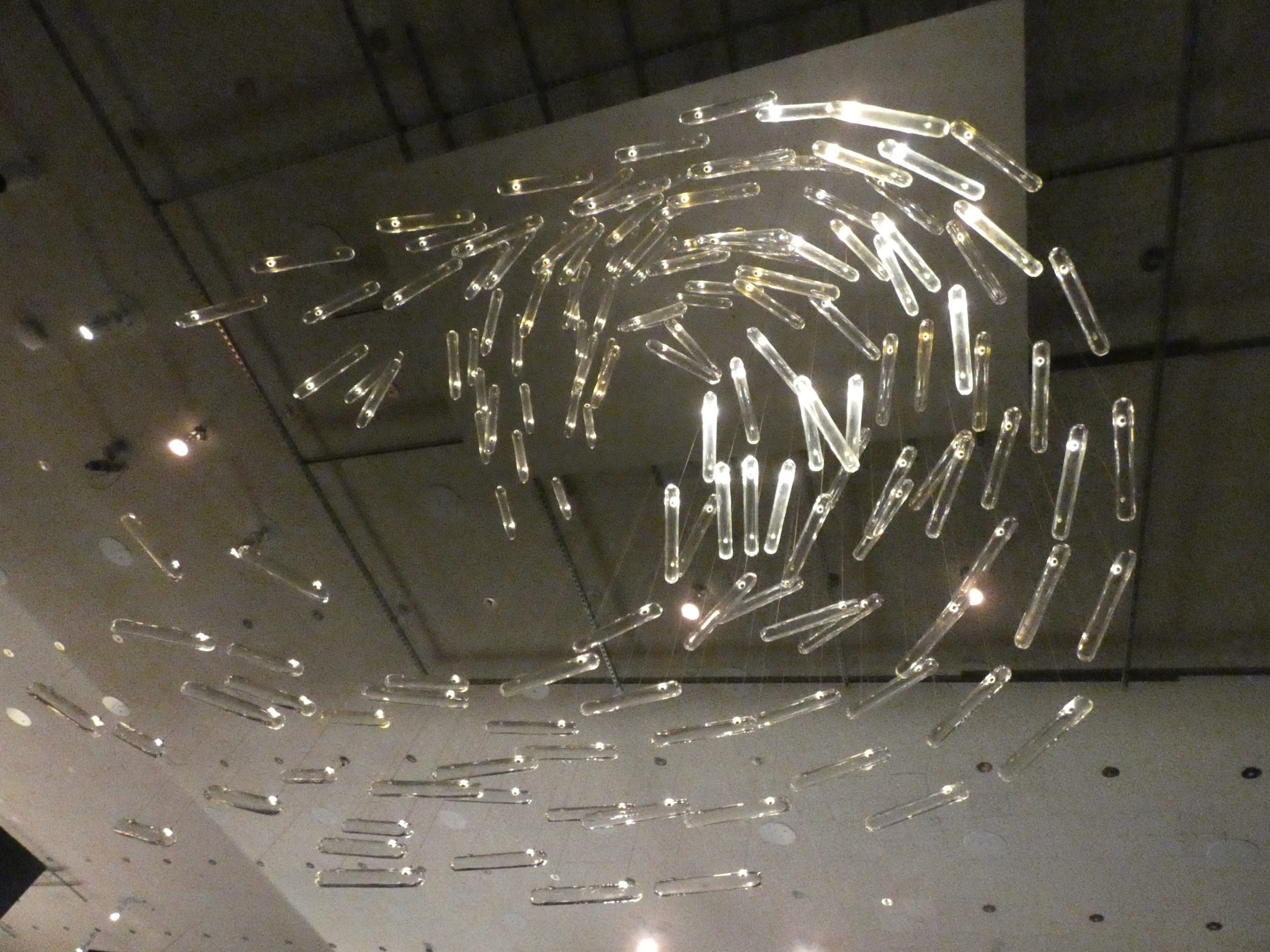
Here we find some of the earliest designs like the sleek, early modern Table Lamp designed in 1927 by Donald Deskey, countered across the room by a piece made in 2000. Ingo Maurer’s illusory Porca Miseria! Hanging Lamp seems to stop time in mid plate crash while throwing the most beautiful shadows across the space.
Instead of walls to separate the galleries, for this section the MFAH has installed Isamu Noguchi’s Akari Lamps as the immersive piece in the center of the gallery and we’re invited to wander though to explore the quality of light.
While not in any way the largest or brightest of the objects in this section Fragile Future 3.1 certainly alights upon our eyes. Another design by Drift, the work encases and suspended dandelion seeds become the conductor of light. Strauss tells PaperCity that to create the effect, Drift glued real dandelion seeds to miniature bulbs and made the open circuitry a design feature of the piece.
She notes that Drift’s objective was “to bring light to the dandelion flowers but also part of the aesthetics is to show the tension between the fragility of nature and technology and the role that technology has in effecting nature.”
As we peer into the dandelion pappus, looking so much like tiny, glowing galaxies captured within a transparent table lamp, we once again consider the lightbulb and answer the question: Can it be art? with an awed, “Yes.”
Electrifying Design: A Century of Lighting is on view now through May 16 at the Museum of Fine Arts, Houston.








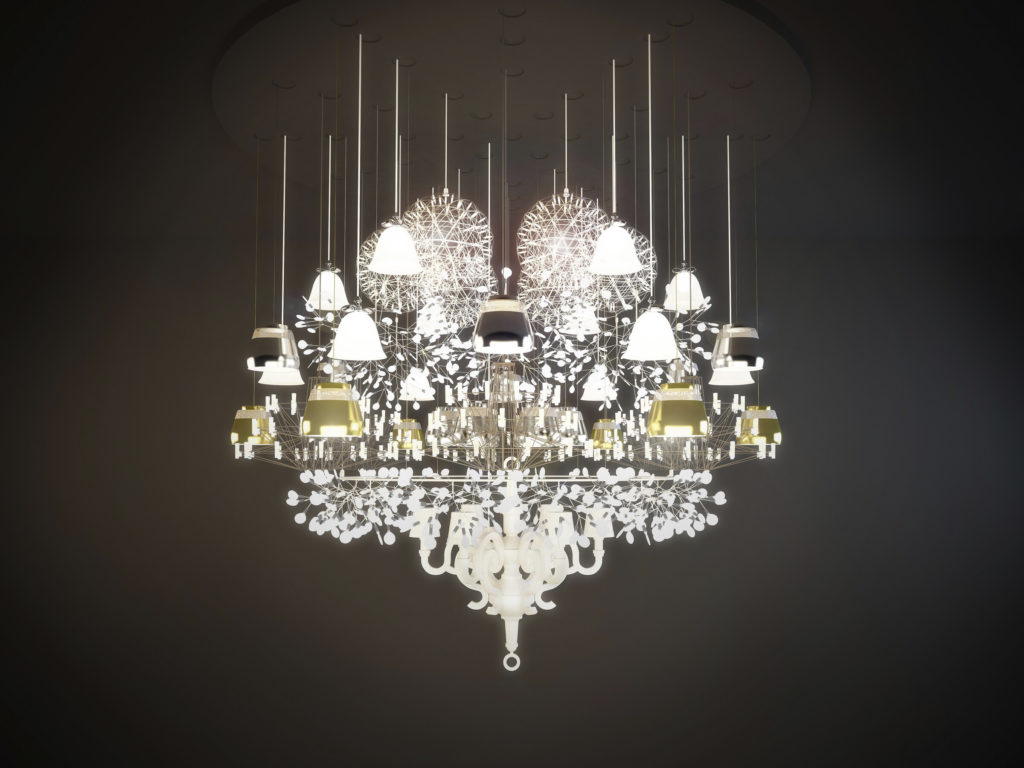

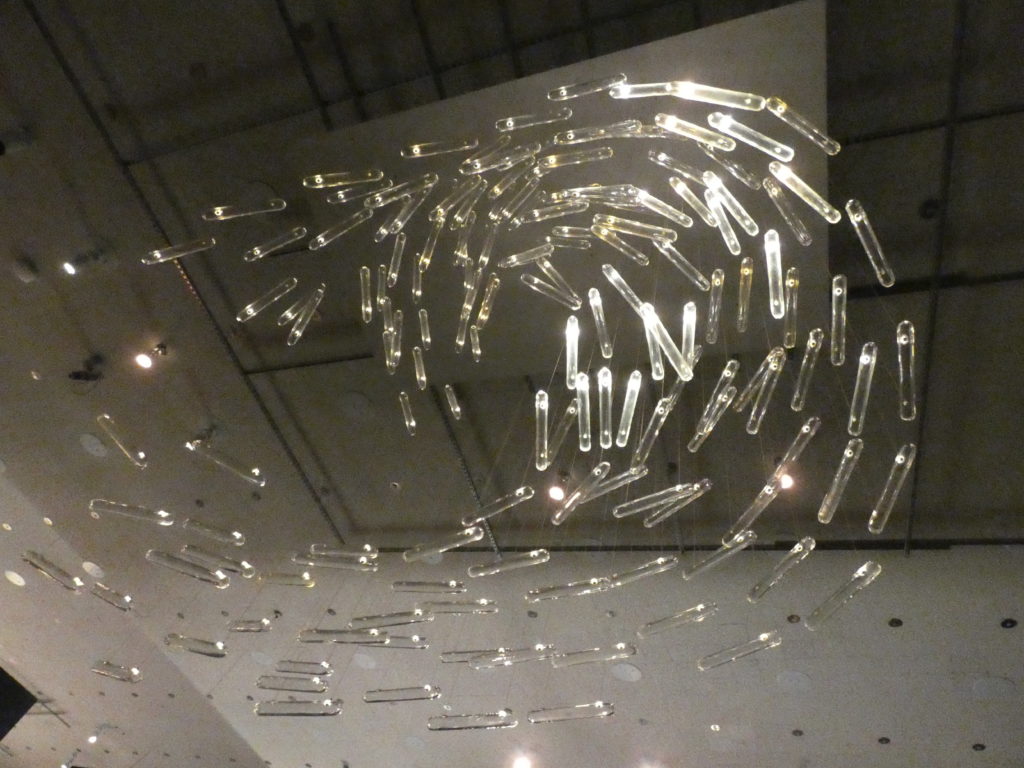
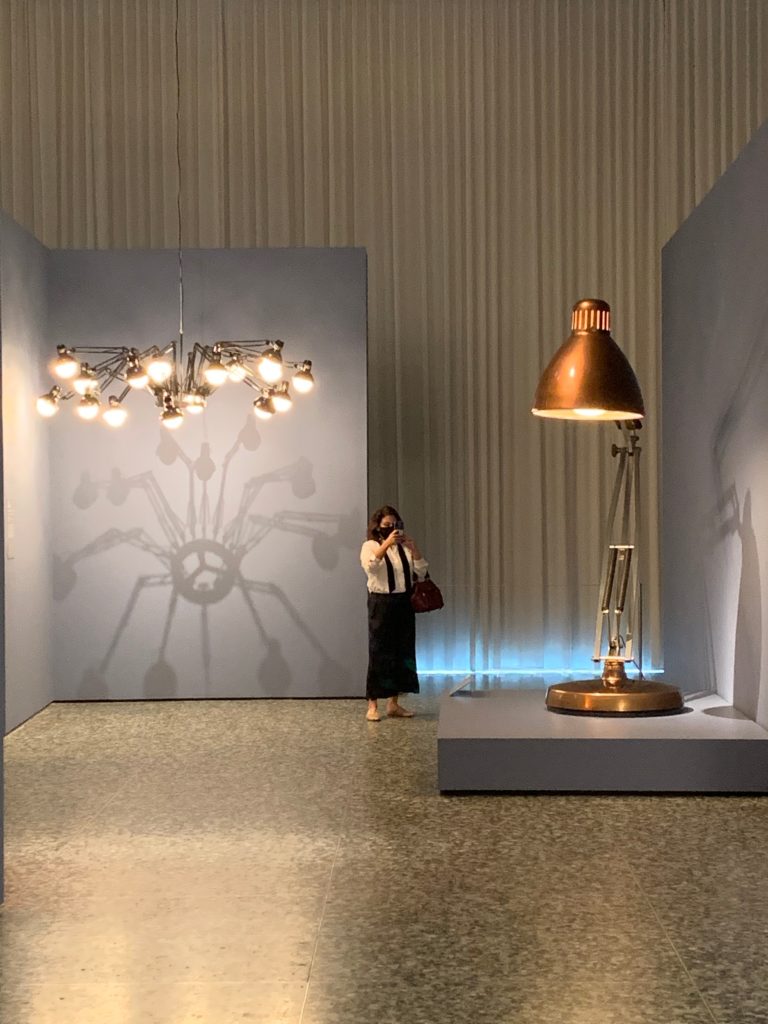
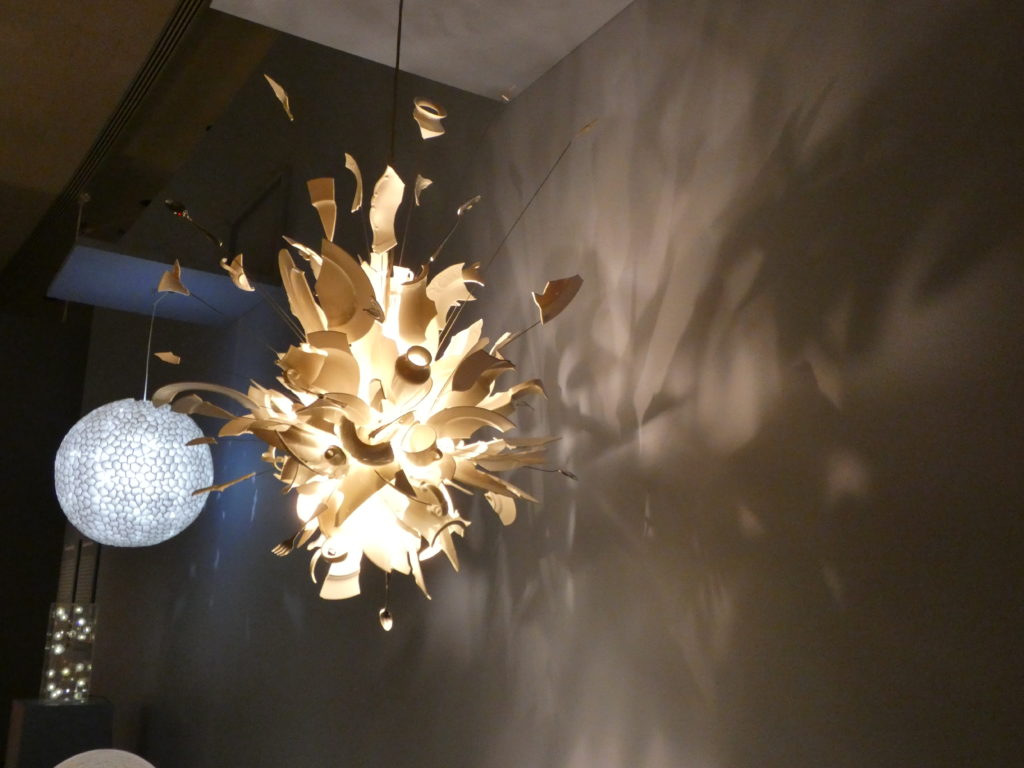




_md.jpeg)










